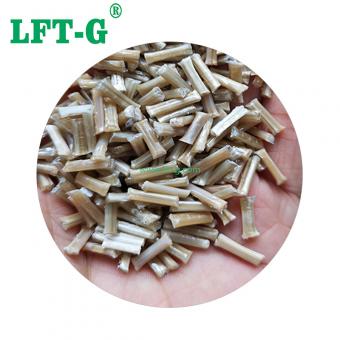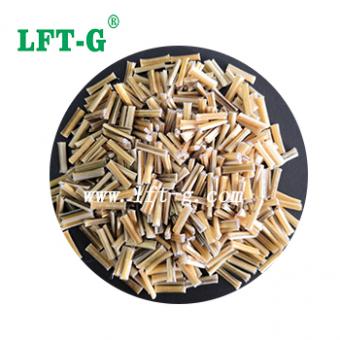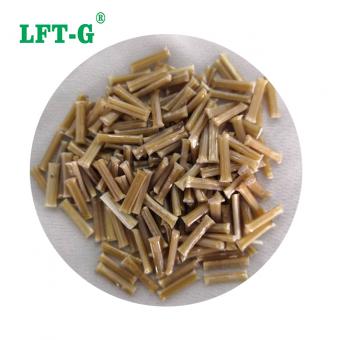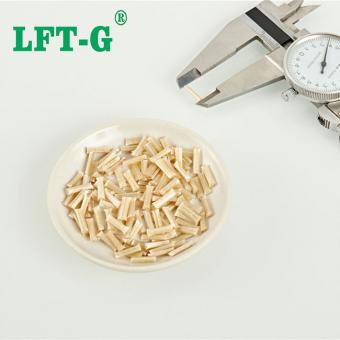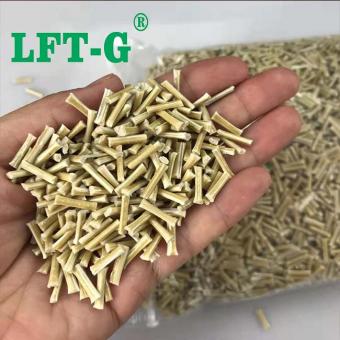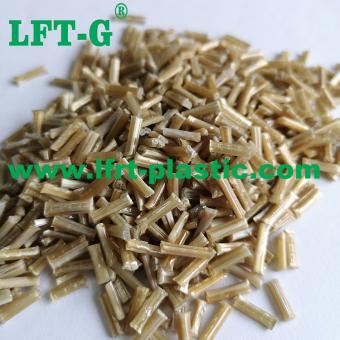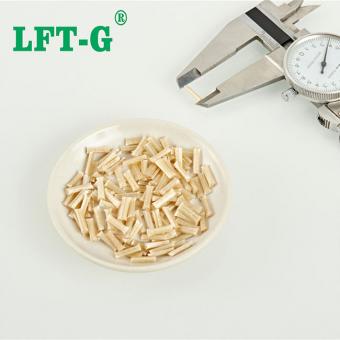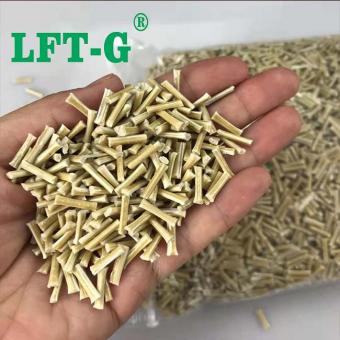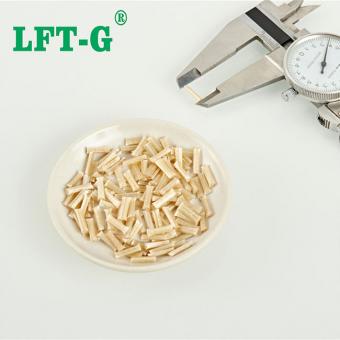-
Modified Polyphenylene sulfide PPS filled Long Glass fiber ReinforcedEngineer PPS filled Long Glass fiber Reinforcedis one kind of engineering modifeid plastic materials of long glass fiber reinforced PPS
- PPS filled Long glass fiber
- Polyphenylene sulfide PPS resin
- PPS lgf
- Modified composite materials
- Thermoplastic Reinforced plastic
Tags :
-
pps polymer glass fiber pps lgf40 granules raw materialpps polymer glass fiber pps lgf40 granules raw material.
- pps polymer
- pps resin granule
- plastic pps lgf40
- pps resin granule prie
- pps pellets
- pps lgf40 granules raw material
Tags :
-
LFT PPS long glass fiber thermoplastic composite granulesPPS long glass fiber reinforced thermoplastic granules for introduction and properties
- glass fiber pps thermoplastic material
- pps fiber molding
- pps lgf glass fiber
- natural color pps lgf composite
- PPS polymer glass fiber pellets
- thermoplastic virgin granules PPS
Tags :
-
LFT PPS LGF20% reinforced thermoplastic granules for Aviation equipmentProduct Name: PPS long glass fiber 20% composite,LFT PPS Materials Length:About 12mm,customize 5-25mm
- PPS long glass fiber composite
- PPS Polymer
- PPS LGF
- PPS composite granules
- LFT PPS LGF
- LFT PPS
Tags :
-
LFT PPS LGF30% Glass Fiber Fill PPS Polymer PelletsProduct Name: Long glass fiber 30% Fill PPS, LFT PPS Polymer Length:About 12mm Applicaiton:Auto parts, energy components and other plastic partsview more
-
LFT Long Fiber Thermoplastic PPS LGF40% CompositeProduct Name: Long glass fiber 40% Fill PPS Length:About 12mm Applicaiton:Auto parts, energy components and other plastic parts
- LFT PPS Glass Fiber 40%
Tags :
-
LFT-G PPS Polyphenylene sulfide LGF composite long glass fiber customized color engineering plasticsWhat is the PPS? Polyphenylene sulfide (PPS) is a new thermoplastic resin with high performance. By filling, modified with excellent high temperature resistance, corrosion resistance, wear resistance, flame retardant, balanced physical and mechanical properties and excellent dimensional stability and excellent electrical properties and other characteristics of the new high performance thermoplastic resin, as well as high mechanical strength, chemical resistance, flame resistance, good thermal stability, excellent electrical properties and other advantages. It has the advantages of hard and brittle, high crystallinity, inflammability, good thermal stability, high mechanical strength, excellent electrical properties, strong chemical corrosion resistance and so on. The mechanical properties of pure PPS are not high, especially the impact strength is relatively low. Good creep resistance under load, high hardness; High wear resistance, the wear at 1000 RPM is only 0.04g, and will be further improved after filling F4 and molybdenum disulfide; It also has a certain degree of self-moistening. The mechanical properties of PPS are less sensitive to temperature. What is the PPS-LGF? PPS is one of the best varieties of heat resistance in the engineering plastic department. The thermal deformation temperature of the material modified by glass fiber is generally greater than 260 degrees, and the chemical resistance is second only to PTFE. In addition, it also has small shrinkage, low water absorption, good fire resistance. Good resistance to vibration fatigue, strong resistance to arc, especially at high temperature. Excellent electrical insulation in high humidity. But its disadvantages are brittleness, toughness, low impact strength, after modification, can overcome the above shortcomings, obtain very excellent comprehensive performance. As a plastic, its properties and uses far exceed those of ordinary plastics, and in many ways it is as good as metal materials. Excellent material PPS has the advantages of high temperature corrosion resistance, excellent mechanical properties, can replace metal including stainless steel, copper, aluminum, alloy, etc., is considered to be the best substitute for metal, copper. What is the application of PPS-LGF? PPS is now widely used in automotive, aerospace, household appliances, mechanical construction and chemical industry for a variety of structural parts, transmission parts, insulation parts, corrosion resistant parts and seals. Under the condition of ensuring sufficient strength and other properties, the weight of the product is greatly reduced. Datasheet for reference Details Number Color Length MOQ Package Sample Delivery time Port of Loading PPS-NA-LGF30 Original color (can be customized) 5-25mm above 25kg 25kg/bag Available 7-15 days after shipment Xiamen Poer Production process Trademarks and patents Teams and customers We will offer you: 1. LFT & LFRT material technical parameters and leading edge design 2. Mold front design and recommendations 3. Provide technical support such as injection molding and extrusion molding.
- PPS Long glass fiber 40
- pps compounds lgf
- pps resin materials lft
- lft-g pps reinforced plastic
- long glass fiber filling pps
- termoplastic resin pps lgf
Tags :
-
Xiamen LFT-G PPS plastic filling Long glass fiber 94-VO flame retardant LGF composite 12mm or soPPS The molecular structure of PPS consists of benzene ring and sulfur atoms interarranged, the configuration is orderly, easy to form a high thermal stability of the crystal structure. At the same time, the molecular structure of PPS material has a highly stable chemical bond characteristics, the benzene ring structure makes PPS more rigid, and the sulfur ether bond (-S-) provides a certain degree of flexibility. PPS itself has good heat resistance, flame retardant, chemical resistance, should be a promising material, but unmodified PPS has some unavoidable defects: Difficult processing: This is the biggest pain point of all high temperature resistant materials -- high processing temperature, no matter the molding process or processing energy consumption, will face great challenges. In addition, PPS is still prone to thermal oxidation crosslinking in the melting process, resulting in reduced fluidity and further improve the processing difficulty; Poor toughness: PPS molecular chain is rigid, the maximum crystallinity is as high as 70%, the elongation is low and the welding strength is not so good. As a result, the impact resistance of unmodified PPS is poor, which limits the application scope. High cost: PPS raw materials and general engineering plastics compared, the price is about 1-2 times higher, and some modified materials compared with low cost performance; Difficult coating: PPS surface coating and coloring performance is not ideal. While this is not a major problem for now, it is a limiting factor. PPS-LGF Long glass fiber reinforced composites can solve your problems when other methods of reinforced plastics do not provide the performance you need or if you want to replace metal with plastic. Long glass fiber reinforced composites can cost-effectively reduce the cost of goods and effectively improve the mechanical properties of engineering polymers, and increase the durability by forming long fibers to form a long-fiber-reinforced internal skeleton network. Performance is preserved in a wide range of environments. TDS for reference Application About us Xiamen LFT composite plastic Co., Ltd. is a brand-name company that focuses on LFT&LFRT. Long Glass Fiber Series (LGF) & Long Carbon Fiber Series (LCF). The thermoplastic LFT can be used for LFT-G injection molding and extrusion, and can also be used for LFT-D molding. It can be produced according to customer requirements: 5~25mm length. The company's long-fiber continuous infiltration reinforced thermoplastics have passed ISO9001&16949 system certification, and the products have obtained lots of national trademarks and patents.
- long glass fiber polyphenylene sulfite
- long fibre reinforced thermoplastics
- long fiber compounds pps
- pps lgf30
- long fiber composite pps granules
- long glass fiber reinforced polyphenylene sulfite
Tags :
-
LFT high performance modified PPS filling long glass fiber compounds sample available natural white 12mmPolyphenylene sulfide PPS is one of the typical representatives of special engineering plastics, with a linear structure of alternating benzene rings and sulfur atoms. In the condensed structure, PPS is easy to crystallize, crystallinity of nearly 70%, therefore, has good thermal stability, chemical stability and dimensional stability, etc. PPS mainly has the following five performance advantages. (1) excellent heat resistance. pps melting point of more than 280 ℃, heat deflection temperature of more than 260 ℃, and after high-temperature heat aging treatment, the strength retention rate is high. (2) since the flame retardant. PPS itself has flame retardant, without adding flame retardants flame retardant level can reach UL94 V- 0 level. (3) good mechanical properties. PPS is a brittle material, has good creep resistance, high surface hardness, good wear resistance, and carbon fiber and other materials compound, but also shows good self-lubricating properties. (4) excellent chemical resistance, irradiation resistance. pps below 200 ℃ almost insoluble in any solvent, can withstand almost all inorganic substances, radiation dose up to 108Gy. (5) good processing properties. pps melt viscosity is low, as the resin matrix of composite materials, for the reinforcement of the flow of excellent wetting effect. As PPS has the above performance advantages, and compared to other high-performance thermoplastic resins and easy processing, low cost, so become an excellent resin matrix for the manufacture of composite materials. Long glass fiber Glass fiber is an inorganic non-metallic material with excellent performance, is a natural mineral with silica as the main raw material, add specific metal oxide mineral raw materials, mixed evenly, molten at high temperature, molten glass liquid flow through the funnel outflow, in the role of high-speed pull gravitational force is drawn and rapidly cooled and cured into a very fine continuous fiber. Glass fiber monofilament diameter from a few microns to more than twenty microns, equivalent to a hair of 1/20-1/5, each bundle of fiber original filament are composed of hundreds or even thousands of monofilaments. Glass fiber basic properties: The appearance of a smooth cylindrical surface, the cross-section is a complete circle, round cross-section to withstand the load capacity; gas and liquid through the resistance is small, but the surface is smooth so that the holding force of the fiber is small, not conducive to the combination with the resin; density is generally in 2.50-2.70 g/cm3, depending mainly on the glass composition; tensile strength than other natural fibers, synthetic fibers to be high; brittle materials, the elongation at break is very small ; water resistance and acid resistance is good, while alkali resistance is poor. It can be divided into continuous glass fiber, short glass fiber (SGF) and long glass fiber (LGF) by length classification. Long glass fiber is the most widely used glass fiber at present. And Xiamen LFT plastic composite company is focuses on the produce of long glass fiber compounds for many years. SGF VS LGF 1. The difference in size length Engineering materials long glass fiber and short glass fiber, literally means the difference in size length; more common short glass fiber size is about 0.2mm-0.6mm between; long glass fiber size is about 6mm-25mm between. 2. Performance strength differences Different lengths of glass fibers are different in their performance strength, the fiber length of long glass fibers in the composite material inside the impact strength than short glass fibers stronger. 3. Production process is different Production of long glass fiber, high requirements for raw materials, especially the manufacturing process requires the surface of glass fiber to be activated, the processing can not be flooded with glass fibers, as well as external leakage phenomenon occurs. Production of short glass fiber, because the size is generally no special requirements, so the production is relatively easy, the requirements for raw materials are not so high, the production costs for manufacturers low. 4. Different production and processing methods Long glass fiber production and processing methods generally use injection molding and molding; while most short glass fiber injection molding method. Product process TDS for reference only Details Number Color Length Sample Packing MOQ Port of Loading Delivery time PPS-NA-LGF40 Original color (or as you required) 12mm (or as you required) Available 25kg/bag 25kg Xiamen Port 7~15 days after shipment Why choose us 1. LFT & LFRT material technical parameters and leading edge design 2. Mold front design and recommendations 3.Provide technical support such as injection molding and extrusion molding.
- PPS polyphenylent
- glass fibre reinforced pps lgf pellet
- pps virgin granules reinforced thermoplastic
- plastic pps lgf40 glass fiber pellets
Tags :
-
LFT-G PPS Polyphenylene sulfide conpounds long glass fiber pellets original color for home appliancePolyamide 12 filling long glass fiber The recommended long-term working temperature of polyphenylene sulfide resin (PPS) is 220~240℃. The material has good thermal stability, and its mechanical properties remain at about 80% and 60% of their original values at 100°C, 160°C and 200°C, respectively. The material has excellent creep resistance and fatigue resistance at room temperature. The material also has excellent resistance to acids, alkalis, salts, organic solvents and other media, except for oxidizing acids and strong oxidizing media, and is almost insoluble in any chemical solvent below 170°C. It is especially suitable for hydrofluoric acid, halogenated hydrocarbons and chloride ion corrosion resistance. PPS is a flame retardant material with an oxygen index of 46 to 53, better than most engineering plastics. Polyphenylene sulfide has high resistance and low dielectric constant electrical properties, and can maintain good electrical properties under high temperature and high humidity conditions. In addition, the mechanical properties of the resin material are not very outstanding because it has good affinity with glass fiber, carbon fiber, inorganic filler and solid lubricant, and the modification is good, so the particles used in injection molding are mainly modified and reinforced by various fibers and inorganic fillers. LGF & SGF Nylon particles of ordinary glass fiber: Size size is about 3-4mm, length to width ratio 50-250 Long glass fiber nylon particles: Size is about 10-12mm, aspect ratio >400 In addition, the distribution of glass fiber in the two kinds of particles is also different. Compared with SGF, LGF has improved rigidity, strength and modulus, especially the notched impact performance has been greatly improved. Compared with SGF, LGF has improved rigidity, strength and modulus, especially the notched impact performance has been greatly improved. The rigidity retention rate of long glass fiber is better than that of short glass fiber, and long glass fiber is more resistant to heat aging. The creep performance is affected by time, temperature and load. At 120℃ and 40Mpa load, the creep of long glass fiber is significantly better than short glass fiber. This is critical for parts with long term static pressure, and long glass fiber can be tried when short glass fiber cannot meet the requirements. Shrinkage is crucial to the size of the part. The transverse shrinkage of short glass fiber material is much higher than the longitudinal shrinkage, and the anisotropy is more serious, resulting in difficult to control the size of the part and obvious shrinkage. In contrast, the transverse and longitudinal shrinkage rates of long glass fiber materials are very close, showing isotropy, improving the risk of part warpage and making the dimensions more controllable. Product process Certification Quality Management System ISO9001/16949 Certification National Laboratory Accreditation Certificate Modified Plastics Innovation Enterprise Honnrary Certificate Heavy metal REACH & ROHS testing About us Xiamen LFT composite plastic Co., Ltd. is a brand-name company that focuses on LFT&LFRT. Long Glass Fiber Series (LGF) & Long Carbon Fiber Series (LCF). The company's thermoplastic LFT can be used for LFT-G injection molding and extrusion, and can also be used for LFT-D molding. It can be produced according to customer requirements: 5~25mm length. The company's long-fiber continuous infiltration reinforced thermoplastics have passed ISO9001&16949 system certification, and the products have obtained lots of national trademarks and patents. Main products
- Long glass fiber Reinforced PPS for electrial accessories
- best long glass fiber pps lgf40 granules
- lft-g pps resin lgf
- pps granules lgf40
- Modified materials pps 40
- Polyphenylene sulfide PPS anti aging
Tags :
-
LFT polyphenylene sulfide Long Fiber Thermoplastic PPS LGF40% CompositeProduct Name: Long glass fiber 40% Fill PPS Length:About 12mm Applicaiton:Auto parts, energy components and other plastic partsview more
-
LFT-G PPS Polyphenylene sulfide LGF composite long glass fiber customized engineering plasticsWhat is the PPS? Polyphenylene sulfide (PPS) is a new thermoplastic resin with high performance. By filling, modified with excellent high temperature resistance, corrosion resistance, wear resistance, flame retardant, balanced physical and mechanical properties and excellent dimensional stability and excellent electrical properties and other characteristics of the new high performance thermoplastic resin, as well as high mechanical strength, chemical resistance, flame resistance, good thermal stability, excellent electrical properties and other advantages. It has the advantages of hard and brittle, high crystallinity, inflammability, good thermal stability, high mechanical strength, excellent electrical properties, strong chemical corrosion resistance and so on. The mechanical properties of pure PPS are not high, especially the impact strength is relatively low. Good creep resistance under load, high hardness; High wear resistance, the wear at 1000 RPM is only 0.04g, and will be further improved after filling F4 and molybdenum disulfide; It also has a certain degree of self-moistening. The mechanical properties of PPS are less sensitive to temperature. What is the PPS-LGF? PPS is one of the best varieties of heat resistance in the engineering plastic department. The thermal deformation temperature of the material modified by glass fiber is generally greater than 260 degrees, and the chemical resistance is second only to PTFE. In addition, it also has small shrinkage, low water absorption, good fire resistance. Good resistance to vibration fatigue, strong resistance to arc, especially at high temperature. Excellent electrical insulation in high humidity. But its disadvantages are brittleness, toughness, low impact strength, after modification, can overcome the above shortcomings, obtain very excellent comprehensive performance. As a plastic, its properties and uses far exceed those of ordinary plastics, and in many ways it is as good as metal materials. Excellent material PPS has the advantages of high temperature corrosion resistance, excellent mechanical properties, can replace metal including stainless steel, copper, aluminum, alloy, etc., is considered to be the best substitute for metal, copper. What is the application of PPS-LGF? PPS is now widely used in automotive, aerospace, household appliances, mechanical construction and chemical industry for a variety of structural parts, transmission parts, insulation parts, corrosion resistant parts and seals. Under the condition of ensuring sufficient strength and other properties, the weight of the product is greatly reduced. Datasheet for reference Details Number Color Length MOQ Package Sample Delivery time Port of Loading PPS-NA-LGF30 Original color (can be customized) 5-25mm above 25kg 25kg/bag Available 7-15 days after shipment Xiamen Poer Production process Trademarks and patents Teams and customers We will offer you: 1. LFT & LFRT material technical parameters and leading edge design 2. Mold front design and recommendations 3. Provide technical support such as injection molding and extrusion molding.view more

 e-mail
e-mail English
English français
français Deutsch
Deutsch русский
русский italiano
italiano español
español português
português العربية
العربية 日本語
日本語 한국의
한국의 中文
中文












